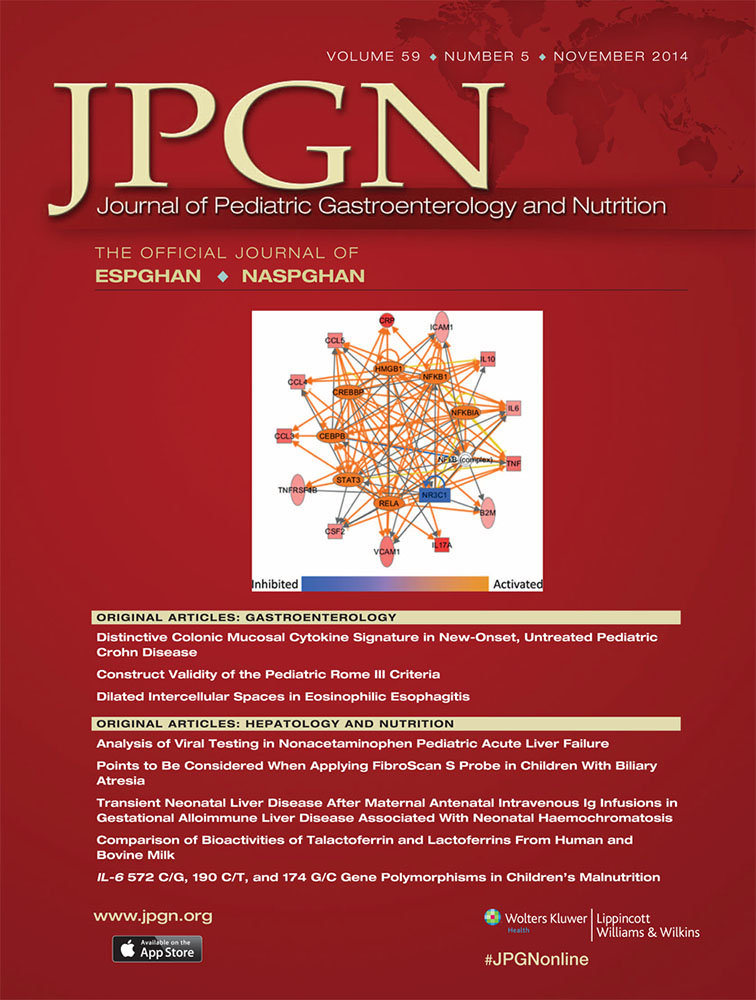Construct Validity of the Pediatric Rome III Criteria
Supplemental digital content is available for this article. Direct URL citations appear in the printed text, and links to the digital files are provided in the HTML text of this article on the journal's Web site (www.jpgn.org).
The authors report no conflicts of interest.
ABSTRACT
Objectives:
Functional gastrointestinal disorders (FGIDs) are common. The diagnosis of FGIDs is based on the Rome criteria, a symptom-based diagnostic classification established by expert consensus. There is little evidence of validity for the pediatric Rome III criteria. The construct validity of the criteria, an overarching term that incorporates other forms of validity, has never been assessed. We assessed the construct validity of the Rome III criteria.
Methods:
Children from 2 schools in Colombia completed the Questionnaire on Pediatric Gastrointestinal Symptoms at baseline and weekly questionnaires of somatic symptoms and disability for 8 weeks (presence and intensity of gastrointestinal symptoms, nongastrointestinal symptoms, impact on daily activities). A total of 255 children completed at least 6 weekly surveys (2041 surveys).
Results:
At baseline, 27.8% children were diagnosed as having an FGID. Prevalence of nausea (Δ 7.8%, 95% confidence interval [CI] 4.46–11.14), constipation (Δ 4.39%, 95% CI 1.79–6.99), diarrhea (Δ 6.69%, 95% CI 3.25–10.13), headache (Δ 7.4%, 95% CI 3.51–11.09), chest pain (Δ 9.04%, 95% CI 5.20–12.88), and limb pain (Δ 4.07%, 95% CI 1.76–6.37) and intensity of nausea (Δ 0.23, 95% CI 0.127–0.333), diarrhea (Δ 0.30, 95% CI 0.211–0.389), abdominal pain (Δ 0.18, 95% CI 0.069–0.291), headache (Δ 0.17, 95% CI 0.091–0.249), and limb pain (Δ 0.30, 95% CI 0.084–0.516) were higher in children with FGIDs (P < 0.001). Children with FGIDs had greater interference with daily activities (P < 0.001).
Conclusions:
Children with a Rome III diagnosis had significantly more gastrointestinal and nongastrointestinal complaints, and greater intensity of symptoms and disability than children without an FGID diagnosis. The study suggests that the Rome III pediatric criteria have adequate construct validity.




